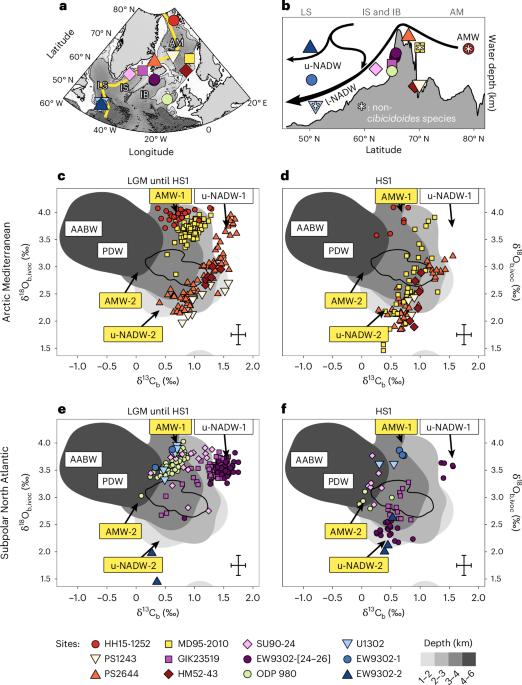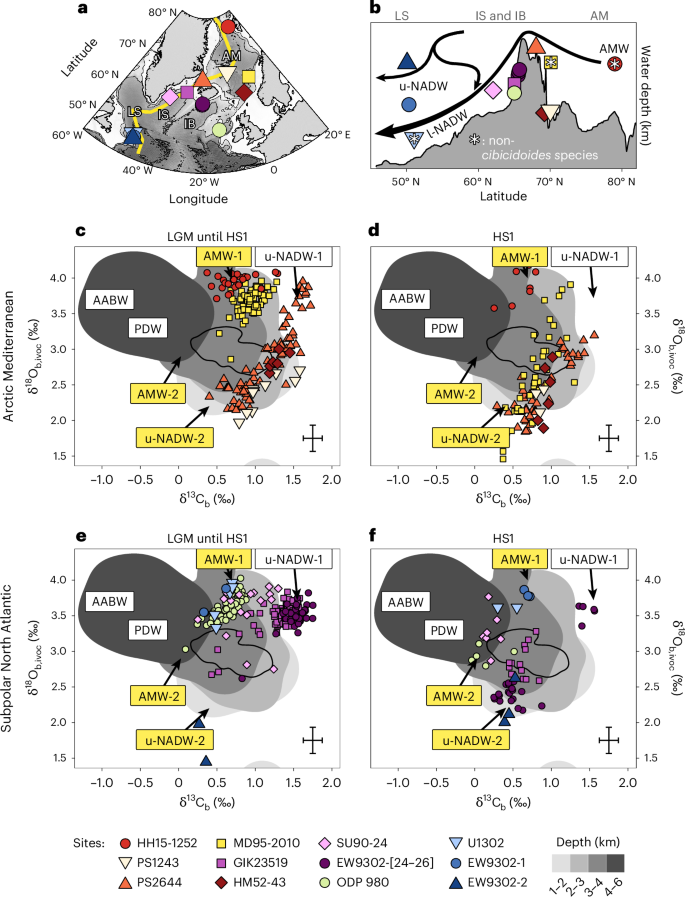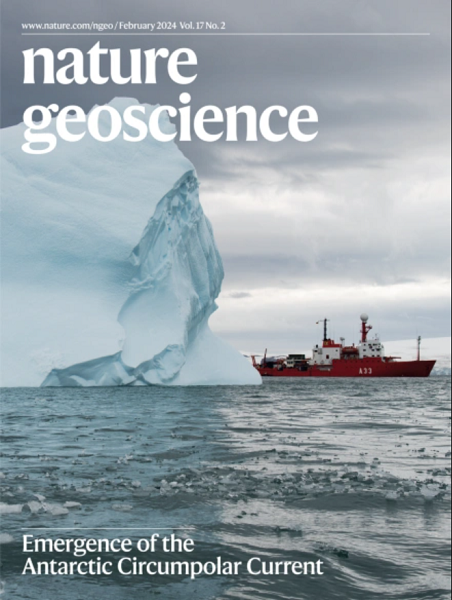末次盛冰期北大西洋深水盛行与海因里希Stadial 1
IF 16.1
1区 地球科学
Q1 GEOSCIENCES, MULTIDISCIPLINARY
引用次数: 0
摘要
深海环流通过反馈碳循环和能量分布来调节冰期-间冰期气候。过去的研究表明,在冰川时期,通风良好的北大西洋深水的收缩促进了深海中的碳储存和大气中二氧化碳水平的降低。然而,不同水团的空间范围和性质仍然不确定,部分原因是由于相互冲突的古海洋学替代重建。在这里,我们结合了五个独立的代理来提高可信度,并重建了末次冰期(约21000年前)和之后的海因里希-斯塔第1期(北大西洋大规模的冰漂流干扰了深水的形成并导致全球气候变化)期间大西洋深水的分布。我们发现北大西洋深水在这两个时期都很普遍,尽管它的性质从寒冷、通风良好的模式转变为不那么通风、可能更温暖的模式。这一发现意味着在这些冷边界条件下深水形成的显著持久性,由两种形成模式之间的补偿维持。我们的约束条件为评估地球系统模型提供了一个重要的基准,可以提高对未来气候预测的信心。本文章由计算机程序翻译,如有差异,请以英文原文为准。


Prevalent North Atlantic Deep Water during the Last Glacial Maximum and Heinrich Stadial 1
Deep ocean circulation modulated glacial–interglacial climates through feedbacks to the carbon cycle and energy distribution. Past work has suggested that contraction of well-ventilated North Atlantic Deep Water during glacial times facilitated carbon storage in the deep ocean and drawdown of atmospheric CO2 levels. However, the spatial extent and properties of different water masses remain uncertain, in part due to conflicting palaeoceanographic proxy reconstructions. Here we combine five independent proxies to increase confidence and reconstruct Atlantic deep water distributions during the Last Glacial Maximum (around 21 thousand years ago) and the following Heinrich Stadial 1—a time when massive ice rafting in the North Atlantic interfered with deep water formation and caused global climate shifts. We find that North Atlantic Deep Water remained widespread in both periods, although its properties shifted from a cold, well-ventilated mode to a less-ventilated, possibly warmer, mode. This finding implies a remarkable persistence of deep water formation under these cold boundary conditions, sustained by compensation between the two formation modes. Our constraints provide an important benchmark for evaluating Earth system models, which can enhance confidence in future climate projections. North Atlantic Deep Water formation was only moderately weaker than it is now during the last glacial period, even when freshwater inputs were high, according to an analysis of independent proxy records.
求助全文
通过发布文献求助,成功后即可免费获取论文全文。
去求助
来源期刊

Nature Geoscience
地学-地球科学综合
CiteScore
26.70
自引率
1.60%
发文量
187
审稿时长
3.3 months
期刊介绍:
Nature Geoscience is a monthly interdisciplinary journal that gathers top-tier research spanning Earth Sciences and related fields.
The journal covers all geoscience disciplines, including fieldwork, modeling, and theoretical studies.
Topics include atmospheric science, biogeochemistry, climate science, geobiology, geochemistry, geoinformatics, remote sensing, geology, geomagnetism, paleomagnetism, geomorphology, geophysics, glaciology, hydrology, limnology, mineralogy, oceanography, paleontology, paleoclimatology, paleoceanography, petrology, planetary science, seismology, space physics, tectonics, and volcanology.
Nature Geoscience upholds its commitment to publishing significant, high-quality Earth Sciences research through fair, rapid, and rigorous peer review, overseen by a team of full-time professional editors.
 求助内容:
求助内容: 应助结果提醒方式:
应助结果提醒方式:


